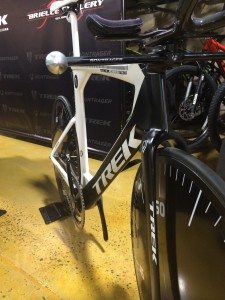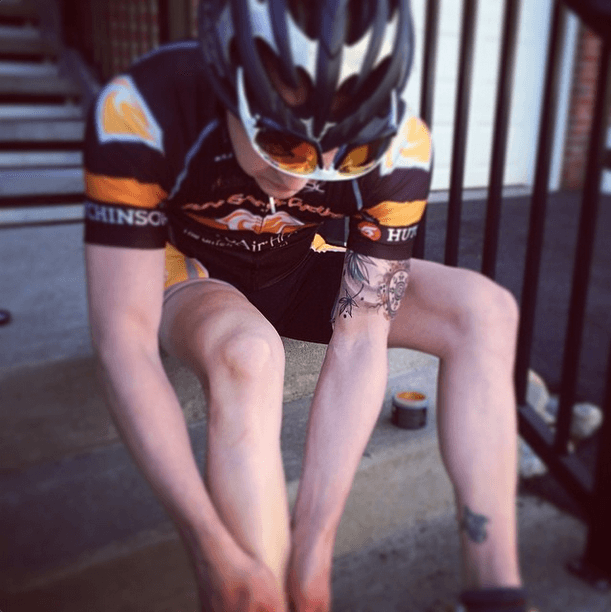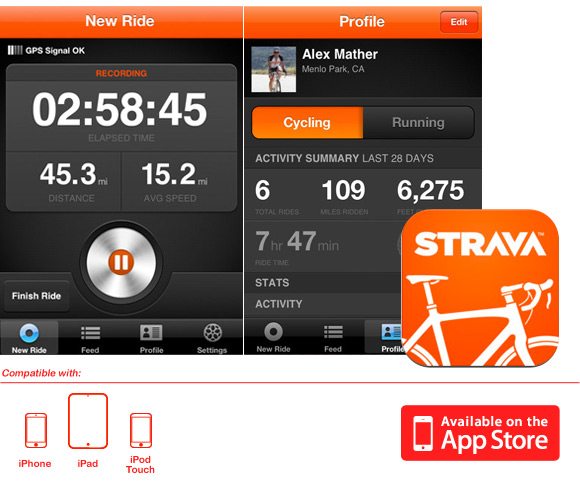[dc]A[/dc] few days ago, I had the privilege of attending a meet and greet with Jens Voigt at a local NJ bike shop. The big, charismatic german, veteran of almost two decades in the peloton, did a Q&A with fans, signed autographs and posed for photos with anyone who asked. During the night, he imparted his wisdom gained from the trials and tribulations of racing in Europe, including a few nuggets that I believe are important to share with all of my readers.
Never forget where you came from:
It bears saying, that even the best of the best are humble in their beginnings. Jens spent more than half his life racing bikes, but he always fondly recalls where he came from. He explained how he tried track and field, and was ok at athletics, but not one of the best. He said that he had been annoyed that he couldn't “do any better” (so much so that he joking described a rude gesture to his track and field coach….) He continued to explain to us that when the local cycling team came to town, he was allured by the offer of a free bike. The rest is, as you all know, history.
Coincidentally, he always remembers where he came from. His first bike was a Diamond. That company was purchased by Trek after the fall of the Berlin Wall. And he even bought a couple of them for his own boys.
So take a page from Jens and remember where you came from.
Never forget who you are and who helped you get there:
When a question was asked about who was one of the most important parts of his racing career, he described the relationship he has with his wife. He described that his career would not have been possible without her devotion and steadfastedness: raising their six children while he was off racing, standing by him throughout all the crashes, the contract negotiations, and the talk of retirement, he painted a picture of the woman behind the man.
Jens made it abundantly clear that everything he accomplished was not only his doing, but those around him. He plainly stated that he would never have been the force that he is if not for those people he surrounded himself with. And his message was clear: surround yourself with people who are like minded, who believe in you and will support you through and through. And when you succeed, don't forget to thank them for helping you on your way.
From thanking his sponsors by becoming a brand ambassador to graciously allowing Juan Manuel Garate a win in the 2006 Giro d'Italia after not contributing a single pedal stroke to the breakaway's progress, Jens has been putting this to practice for years. And what he said next is why he is so readily able to remember all those that helped him.
Believe in yourself unconditionally:
 Jens pointed out that you have to believe in yourself. You have to believe in yourself without hesitation or fail, you have to dream big and you have to go out there and “get what you want”. He recounted his horrific crash in the 2010 Tour de France on the descent of the Col due Petit-Saint-Bernard in which he fractured his cheek and sustained a concussion. He regaled us with details like German TV announcers predicting he had a 50/50 chance to survive the night. And then he went on to explain how he was determined to return to racing, as strong as he was before.
Jens pointed out that you have to believe in yourself. You have to believe in yourself without hesitation or fail, you have to dream big and you have to go out there and “get what you want”. He recounted his horrific crash in the 2010 Tour de France on the descent of the Col due Petit-Saint-Bernard in which he fractured his cheek and sustained a concussion. He regaled us with details like German TV announcers predicting he had a 50/50 chance to survive the night. And then he went on to explain how he was determined to return to racing, as strong as he was before.
And he did return to racing, crashing again in the 2010 Tour, but he maintained his belief in himself. To quote Jens that massive crash and chase back to the peloton on an ill fitting Mavic service bike: “I've had better days than this. But I'm still alive. It's better than last year, you see? Last year, I was at this time in the race, I was in hospital already. And this time I'm still on my bike. Didn't crash on my head, didn't crash on my face, so things could be worse.”
So be like Jens: believe in yourself and dream big. Even if you fail a couple times, if you are able to get up and try again, you're doing all right.
There are no shortcuts:
Considering that in this day in age everyone is looking for a quick buck, a shortcut towards greater fitness or a way to cut the corners to get something done faster, it was said that there are absolutely no shortcuts to your destination. If you want to be one of the best, you have to put in the time to get there.
With a touch of sadness in his voice, Jens recounted the final years of his racing career. He conjured up an image of a body that was less willing to suffer, a mind that was less willing to force the body to suffer and a longing to lead a less nomadic life, spending more time with his wife and children.
He also said there was no such thing as a shortcut when it came to coffee. And we all know that Jens loves his coffee.
Thank you Jens, for providing a little look into your life and your career. You've been an inspiration to many of us through the years, and we look forward to seeing you in a car, guiding the next generation of superstars to countless victories.




 Jens pointed out that you have to believe in yourself. You have to believe in yourself without hesitation or fail, you have to dream big and you have to go out there and “get what you want”. He recounted his horrific crash in the 2010 Tour de France on the descent of the Col due Petit-Saint-Bernard in which he fractured his cheek and sustained a concussion. He regaled us with details like German TV announcers predicting he had a 50/50 chance to survive the night. And then he went on to explain how he was determined to return to racing, as strong as he was before.
Jens pointed out that you have to believe in yourself. You have to believe in yourself without hesitation or fail, you have to dream big and you have to go out there and “get what you want”. He recounted his horrific crash in the 2010 Tour de France on the descent of the Col due Petit-Saint-Bernard in which he fractured his cheek and sustained a concussion. He regaled us with details like German TV announcers predicting he had a 50/50 chance to survive the night. And then he went on to explain how he was determined to return to racing, as strong as he was before.